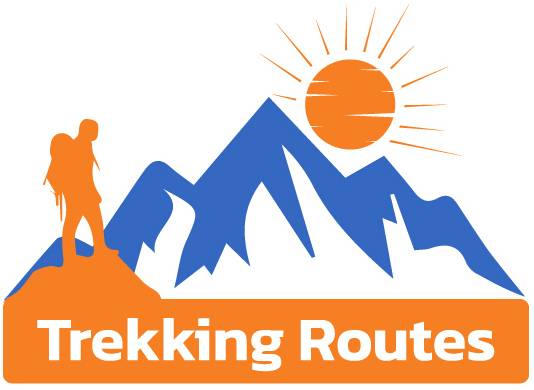Trekking is a thrilling way to explore nature, challenge yourself physically, and experience breathtaking landscapes. But as a first-time trekker, it’s easy to make mistakes that can turn your adventure into a challenging ordeal. From packing errors to ignoring physical preparation, these mistakes can lead to discomfort, fatigue, or even injury. This guide will help you avoid common pitfalls, ensuring your first trek is safe, enjoyable, and memorable.
1. Overestimating Your Fitness Level
Trekking requires more than just casual fitness. Even experienced gym-goers often find themselves struggling on steep trails or at high altitudes. First-time trekkers may assume they can handle the trek without proper preparation, leading to exhaustion and injury.
Tip: Be honest with yourself about your fitness level. Choose a trek that matches your capabilities, and consider starting with a shorter, less demanding trek. For longer or higher-altitude treks, gradually build your endurance and strength with hiking practice and cardio exercises.
2. Insufficient Physical Preparation
Trekking, especially at high altitudes, demands good physical conditioning. Without proper preparation, first-time trekkers risk tiring out quickly, getting injured, or failing to complete the trek. Skipping physical preparation can make even moderate treks seem overwhelming.
Tip: Start preparing at least six weeks before your trek. Incorporate leg and core strengthening exercises, such as squats, lunges, and step-ups, into your workout routine. Go for hikes on uneven terrain to build stamina and train your body for the rigors of trekking. Additionally, work on your cardiovascular fitness through running, swimming, or cycling.
3. Packing Too Much or Too Little
Packing can be a tricky balance for first-time trekkers. Overpacking leads to a heavy load that slows you down and causes fatigue, while underpacking might leave you without essential gear, such as warm clothing or a first-aid kit. Both mistakes can negatively impact your trek.
Tip: Plan your packing carefully. Stick to the essentials, such as layered clothing, waterproof gear, a first-aid kit, and trekking poles. Avoid bringing unnecessary items like too many changes of clothes. The key is packing light but smart—focus on multi-purpose items, and always bring enough food and water for each day.
4. Wearing Inappropriate Footwear
Choosing the wrong footwear is one of the most common mistakes for new trekkers. Wearing regular sports shoes or untested boots can lead to blisters, discomfort, and even foot injuries. Poor-quality footwear can also cause slips or ankle sprains on rough or wet trails.
Tip: Invest in a pair of high-quality trekking boots that offer ankle support, are waterproof, and fit comfortably. Break them in by wearing them on smaller hikes before embarking on your main trek to avoid blisters and ensure they’re comfortable over long distances.
5. Ignoring Altitude Sickness
Altitude sickness is a serious concern when trekking at high elevations, and first-time trekkers often underestimate its effects. Symptoms like headaches, dizziness, and nausea can strike unexpectedly. Ignoring the warning signs can lead to severe conditions like High Altitude Pulmonary Edema (HAPE) or High Altitude Cerebral Edema (HACE), which are life-threatening.
Tip: Acclimatization is key to avoiding altitude sickness. Take it slow, especially when ascending to higher altitudes. Hydrate well, avoid alcohol, and listen to your body. If symptoms persist, descend to a lower altitude and seek medical help. For treks above 3,000 meters, consider taking Diamox (acetazolamide) as a preventive measure, but consult your doctor beforehand.
6. Not Staying Hydrated
Dehydration is a common issue, especially at high altitudes, where the air is drier and you lose water more quickly. Many first-time trekkers don’t realize they need to drink more water, even when it’s cold. Dehydration can cause fatigue, headaches, and make altitude sickness worse.
Tip: Drink water regularly, aiming for at least 3 to 4 liters per day while trekking. Carry a reusable water bottle and refill it frequently. In remote areas, use water purification tablets or a filter to ensure safe drinking water. Also, include electrolytes in your water to replace salts lost through sweat.
7. Skipping Travel Insurance
Trekking in remote areas, especially at high altitudes, involves risks. First-time trekkers often neglect to get travel insurance, thinking they won’t need it. However, accidents, illnesses, and weather-related delays can occur, leaving you with expensive evacuation or medical bills.
Tip: Always purchase travel insurance that covers trekking and high-altitude activities. Ensure it includes medical evacuation, trip cancellations, and coverage for adventure sports. Some policies also offer coverage for gear loss or theft, which can be useful for longer treks.
8. Rushing the Trek
Some new trekkers try to complete their trek too quickly, either to stick to a schedule or due to excitement. Rushing leads to exhaustion, increases the risk of injury, and may cause you to miss out on the beauty and serenity of the trek. Pushing yourself too hard, especially at altitude, can also exacerbate altitude sickness.
Tip: Trekking is about the journey, not the destination. Plan your trek with adequate time for acclimatization and rest days. Set a comfortable pace that allows you to enjoy the scenery, take photos, and engage with local cultures. It’s better to take it slow and finish strong.
9. Neglecting Local Customs and Etiquette
When trekking in foreign countries or remote regions, it’s important to respect the local culture and traditions. Many first-time trekkers unknowingly offend locals by dressing inappropriately, taking photos without permission, or behaving in ways that are considered disrespectful.
Tip: Before your trek, research the customs and cultural practices of the local people. Dress modestly, especially in religious areas, and always ask for permission before photographing people or their homes. Learning a few basic phrases in the local language can go a long way in showing respect and appreciation for the local culture.
10. Poor Dietary Choices
Maintaining proper nutrition is essential during trekking. Many first-time trekkers indulge in unhealthy, greasy meals, or don’t eat enough, leading to stomach issues or lack of energy. Failing to fuel your body properly can result in fatigue and make the trek much harder than it needs to be.
Tip: Stick to a balanced diet with a focus on carbohydrates, proteins, and healthy fats. In Nepal, for example, Dal Bhat (lentils and rice) is a popular and nutritious meal that provides sustained energy. Avoid processed or fried foods, and carry high-energy snacks like nuts, dried fruit, and energy bars to keep you going throughout the day.
11. Disregarding Weather Forecasts
Mountain weather can change quickly and without warning. First-time trekkers often overlook the importance of checking the forecast and packing accordingly. Getting caught in a storm or being unprepared for cold nights can turn dangerous.
Tip: Always check the weather forecast before setting out each day, and pack layers to handle various conditions. Carry a waterproof jacket, warm clothing, and a hat to protect yourself from sudden weather changes. Be prepared for rain, snow, or even scorching sun at higher altitudes.
12. Going Solo Without Experience
Solo trekking may sound appealing, but for first-time trekkers, it’s risky. Without experience, you could get lost, injured, or face other unforeseen challenges. Trekking alone in remote areas increases the risk of danger if something goes wrong.
Tip: If you’re new to trekking, consider joining a group trek or hiring a local guide. A guide can provide valuable insights into the trail, help you navigate difficult sections, and offer support in case of emergencies. Trekking in a group also enhances safety and allows for a more enjoyable social experience.
13. Not Carrying Essential Safety Items
First-time trekkers often overlook essential safety gear, thinking they won’t need it. However, even on short treks, you should be prepared for unexpected situations like injuries, bad weather, or getting lost.
Tip: Always carry a basic first-aid kit with bandages, antiseptics, and medications for common trekking issues like blisters or altitude sickness. Pack an emergency blanket, a whistle, a flashlight, and a multi-tool. These items can be lifesaving in the event of an emergency.
14. Relying Too Heavily on Technology
While smartphones, GPS, and other gadgets are useful, they’re not always reliable in remote mountain regions. Many first-time trekkers rely too much on technology, only to face issues when their devices lose signal or run out of battery.
Tip: Always carry a physical map of the area and learn basic navigation skills before your trek. A compass can also be helpful if you’re trekking in less-populated areas. While your phone or GPS can be useful, don’t depend on it entirely—know your route in advance.
15. Ignoring Leave No Trace Principles
First-time trekkers may not be aware of the environmental impact they can have on trails and natural areas. Littering, disturbing wildlife, and damaging the ecosystem can lead to long-term harm.
Tip: Follow Leave No Trace principles, which encourage responsible travel. Carry all your trash with you, stick to established trails, and respect wildlife. Avoid picking plants, disturbing natural habitats, or leaving any waste behind. Protecting the environment ensures that future generations can enjoy these beautiful areas too.
Conclusion
Trekking is a rewarding experience that allows you to connect with nature and push your physical limits. By avoiding these common mistakes, first-time trekkers can ensure a safer, more enjoyable adventure. Remember, preparation is key—whether it’s physical conditioning, packing smartly, or respecting the environment and local customs. When you take the time to plan and learn from others’ mistakes, your first trekking experience will be one to cherish for a lifetime.







0 Comments